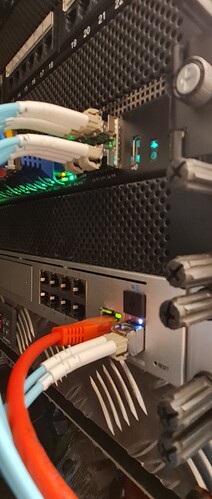There’s no difference between Sonore optical modules over generic standard ones other than a pretty case. They all use an industry standard RJ45 to SFP port converter and a transceiver module to convert ethernet to optical and mate to the fibre patch lead - Sonore sells Finisar modules as part of their “Systemoptique” in-house made-up certification system. Incidentally, Sonore’s stuff uses the now very much legacy OM1 62.5/125 µm fibre and modules based on LED technology. The newer OM2/3/4/5 stuff is designed for vertical-cavity surface-emitting laser (VCSEL) transceivers.
I have a mixture of makes of transceivers in my network setup. The top 4 here are Juniper Networks, bottom one is an Intel. The ones out in the office are a mix of Intel and Dell. These are SFP+ for 10Gb fibre optic, but you get the idea.
You can buy the components to build your own converter setup from suppliers like FS.com (they also have a US website)
A typical media converter costs ~ £20, e.g.
SFP module ~ £5 e.g.
LC-LC duplex fibre patch lead, 1m ~ £3
Say, £30 all in. The equivalent from Sonore (with legacy OM1 technology) is ~ USD 500 and that’s without a power supply:
https://sonore.us/opticalModule-Deluxe.html
And honestly, putting a LPS on something like this is a total waste of money. The units have internal switching regulators to derive the lower supply voltages need for the internal circuitry.
There’s nothing fancy about networking - companies selling “audiophile” networking gear are just rebranding/repackaging existing manufacturers’ products and selling for ridiculous mark-ups.
I wrote an earlier post about 2 of the well-known 8-port “audiophile” ethernet switches. Both are made from the innards of a $30 Zyxel switch with the addition of an entirely superfluous tight tolerance TCXO.
